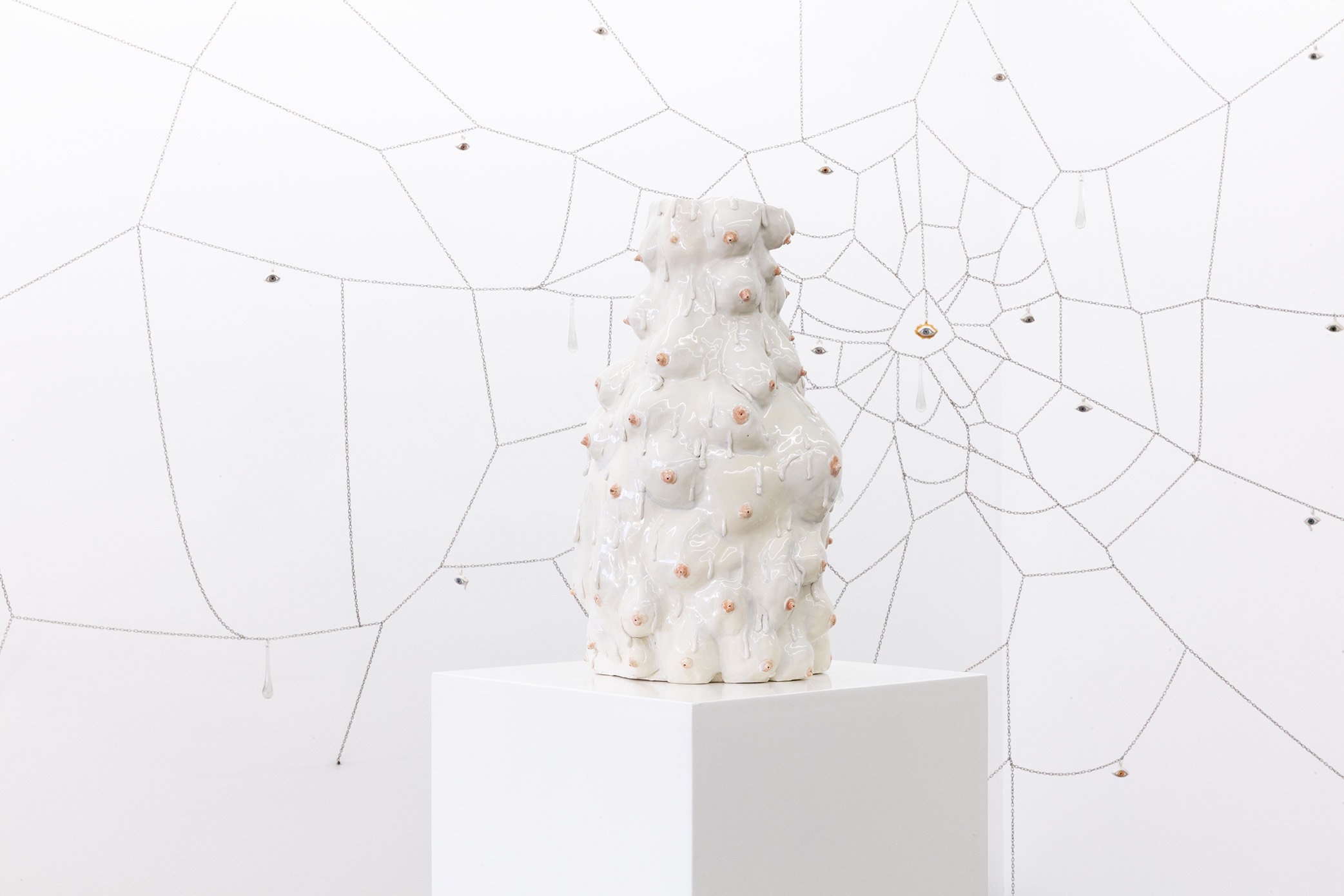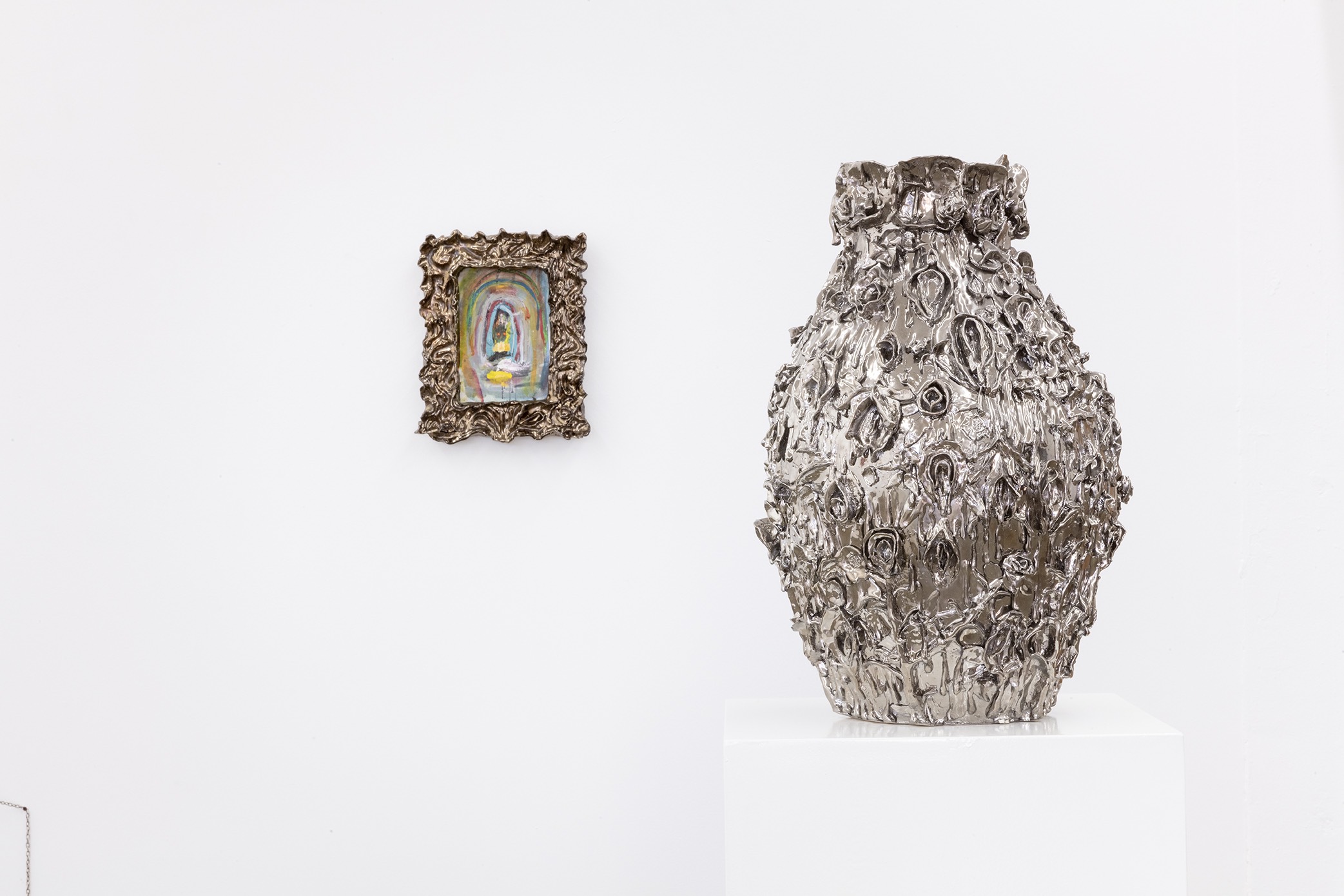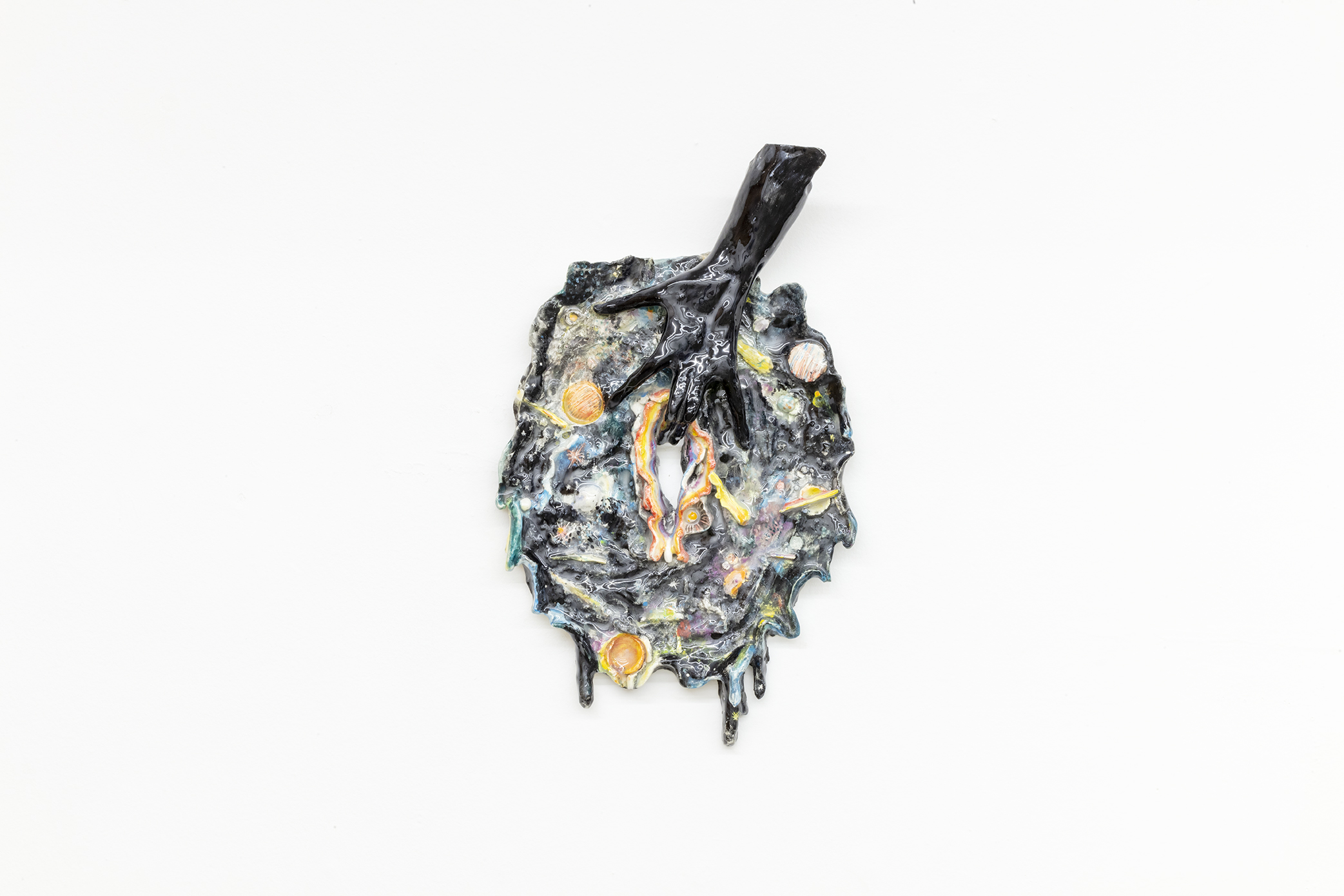
Review
Alejandro García Contreras at Saenger Gallery
by Renard
Reading time
6 min
Alejandro García Contreras' work exhibition at the Saenger Gallery Project Room is a curated arrangement of multidisciplinary pieces artworks (in this case installation, ceramics, and painting) that delve into themes such as the cosmic, the feminine, and sexuality.
The exhibition’s artworksworks involve employ ceramics, either primarily or "secondarily," serving as frames for paintings or even mirrors on display in some cases. The artist's intimate relationship with the material and the impact of a third dimension on flat surfaces are evident, presenting various ways of approaching form. And it is exactly because of the form that it’s a good idea to question the works in this sample.
How can voluptuousness be experienced in two dimensions? There seems to be a considerable gap between how the artist conceives sensuality in sculpture and how it translates into painting. Sometimes, the painting remains untouched; the eroticism it can produce arises from a tainted eye by the hand that sculpts it, but there is no invitation to touch but rather a dislocation of intentions from the mouth, hands, and entire body towards the object being observed.

Now, how can one claim the pictorial event under the terms of popular illustration? It is undoubtedly a medium widely used these days, echoing the pop art of the last century, attempting to impose artistic criteria on mass-distributed images. The advertising symbol, which alludes to a perverted spirituality of the contemporary era, is not far from the sacred feeling once represented with other images, although these were more intimate. One of the pieces is a portrait of Sailor Moon penetrating herself with a dildo. She is enclosed in a ceramic frame that continues the cosmic theme, including moon phases, a comet, etc. What intentions lie behind painting this, and what would be the difference between framing a digital print of the same illustration? Regardless of the image, the question remains: What does this disposition of bringing an illustration onto canvas and oil paint do for painting?

If the intention is to display an image referring to a conception of the sexual, it seems to me that what is portrayed here is more masculine than feminine. I say this not because Alejandro is a man but because the presentation of symbols without an opening to a non-formal, rigid outcome carries more masculine connotations than feminine ones, which sometimes transfigure forms, amplifying and later playing with them without letting them succumb to their own limitations, a characteristic theme of paintings made by all types of people. On the other hand, in the ceramic sculptures, there is a continuation and perversion of form referring precisely to the feminine. Although they may depict genitals, flowers, or breasts, these elements emerge one after another, giving rise to new bodies of the same essence.

In another piece, Universa / Origin of the Universe, a hand touching a vulva merges with the idea of the universe's expansion. It is well known that mythological and cultural conceptions of the cosmos are associated with representations of the feminine, not from springing from grammar or gender but from the energy and nature that convey impressions of the boundless and also the restrained, open circuits that corrupt predetermined paths to give way to multiplicity. While femininity has been associated with anatomy, once represented in the pictorial realm, not to mention other realms like literature or music, it is essential to ask: How could it go beyond the vulva and breasts?
The relationship between those who paint with the symbols is inevitable; there is no sovereignty, not even in the tiniest linetrace, when it is placed on the canvas, not until it is no longer what it was. Therefore, anything can be painted, but representing something is, in any case, the opposite of painting. And this does not limit itself to abstract or expressionist currents, but to the mere act of bringing an image onto a surface. This is where representation engages with the presence of the artwork. The problem with symbols is that they often do not grant autonomy to those who present them; instead, they carry their general discourse wherever they appear. The issue of representation is not just a discussion between figuration and abstraction; conceptually, it involves conflicts related to non-figurative understandings that are simultaneously exposed in artistic creation.

In Vibrations of an Imperfect Cosmic Web there are pieces suggesting a sensory experience of the feminine as an object of desire, but not from the identity of the feminine. It is nothing new that the male observer's gaze has shaped female stereotypes throughout history, but the interest here is not to point out something similar but rather to ask once again what is desire, and to what extent one is involved in identifying with its object, if there is one.
Desire cannot be treated as an essence, neither to defend sexual identity nor much less artistic convictions. Desire inserts itself as much as it is disassembled, and in the desiring forces objects like art betray the producer's intentions while simultaneously feeding on these updates. In this way, it seems to me that the artist's sensual and technical relationship is evident in ceramics that do not aim to create an image or frame another image but rather to be a body in space, casting shadows and reliefs. It offers an alternative sense to sight, inviting an experiential understanding of the image.
In the exhibition, there are pieces paying symbolic homage to the classic figure of womanhood, specifically to Artemis of Ephesus. More than alluding to the feminine, the exhibition pays tribute to the creation archetypes that have marked the graphic references of our Western society. (Not to mention that in the East, there are female characters representing destruction, such as the goddess Kali in Hinduism, and yesyes, she does have hanging breasts but she also has several men's heads around her waist).
Alejandro's vision alludes to undeniable symbols of culture, but also points to a structure that has been under threat since the last century. The artist's work allows these symbols to be affected and transmuted into a recognition of both forces, the feminine and the masculine, to open up to aesthetic commitments. It is a reminder that desire shatters symbols to create experiences, and that representation is merely the vestige of the ungraspable.
— Renard
Translated to English by Sebastián Antón-Ojeda
Published on October 15 2023